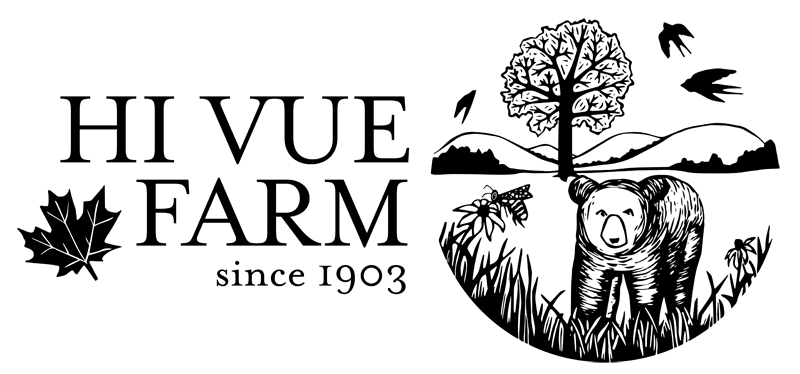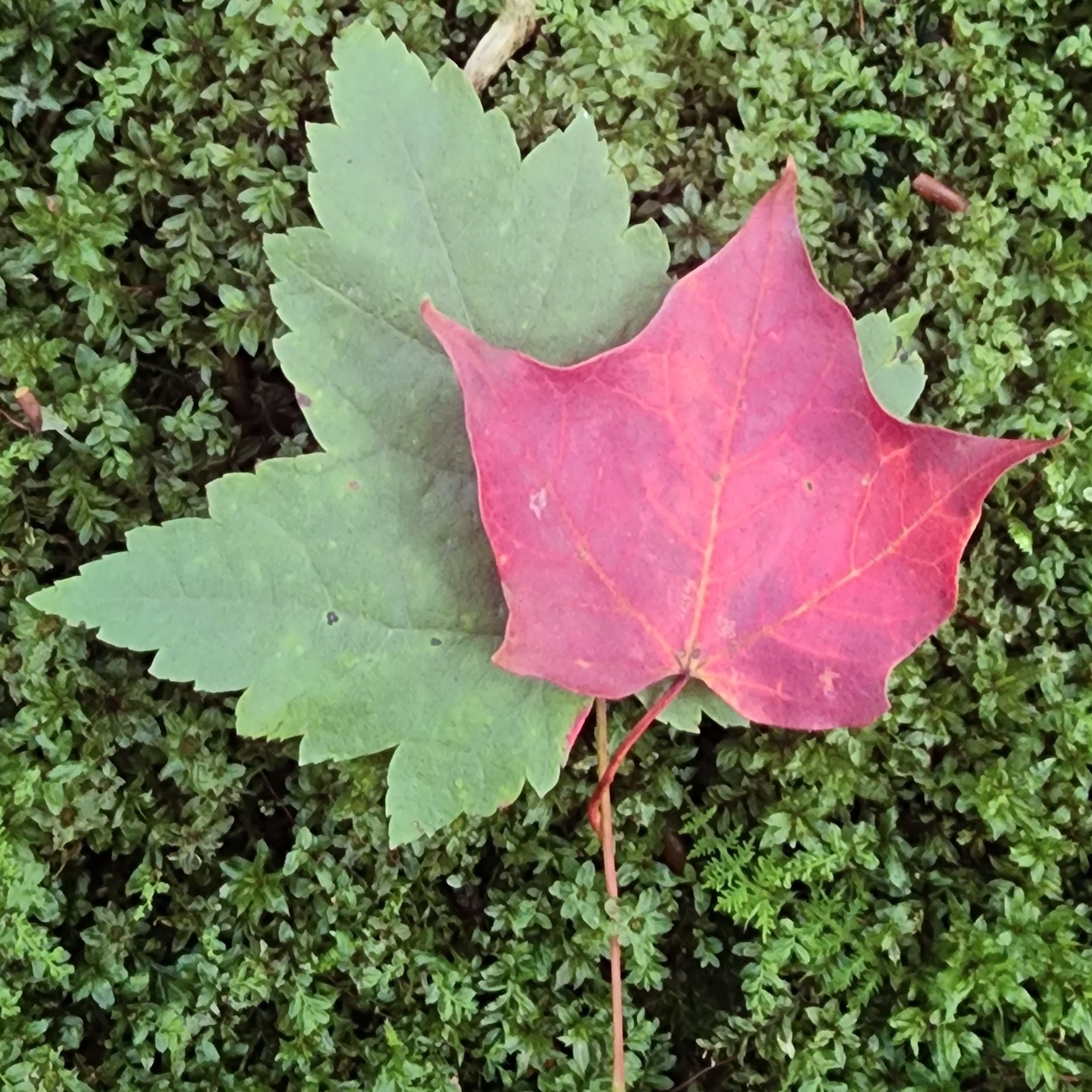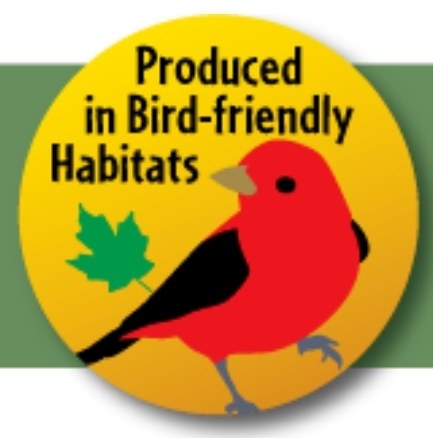We prioritize enhancing migratory songbird habitat and maintaining wildlife corridors.
Cutting Trees to create Bird Habitat
Creating Migratory Songbird Habitat from old farmland.
Bird Friendly Maple 
We’ve created a Bird Friendly Maple Farm that considers bird habitat as a primary goal of forest management.
Committed to Reducing Carbon Dioxide Emissions
We are a Carbon Offset Farm!
It’s official – we are committed to reducing carbon dioxide emissions as a Carbon Offset Farm! What does this mean? It means that we have made a commitment to our forest to maximize the amount of carbon offset our trees can produce. Hi Vue Maples has joined a partnership with fellow landowners in the Cold Hollow Mountains of Vermont to preserve our forest and farm land as a collective whole to reduce and store carbon dioxide emissions (Green House Gases) caused in other parts of the country and world.
We do this by “sequestering” (capturing and storing) greenhouse gases with our trees and crop land. The healthier forest we have – the more carbon is stored. Trees store carbon by photosynthesis – they take carbon from the atmosphere and convert it into carbon based sugars to fuel their tissues.
Stewardship
What’s a healthy forest and why do we qualify? Stewardship – my family has taken care of our farm for generations. Our goal throughout the years has been to create quality maple syrup while taking care of the land.
How we take care of the land
- encouraging as many varieties of trees as possible
- watching for invasive species
- selectively cutting trees for logs and firewood
- maintaining wildlife habitats
Our farm covers 400 plus acres – 200 of which is our maple sugar bush. The remaining 200 consist of fields used for agriculture purpose and multi-use forest. We have created high quality bird habitat in this area to increase our migratory songbird habitat. These steps that began a 100 plus years ago has allowed us to transition to a carbon offset farm with no major changes, just a deep rooted future commitment to keeping our farm as healthy as possible to help the world reach the goal of net zero.
Partnerships
This project was the undertaking of the local conservation group Cold Hollow to Canada (CHC) – who’s goal is to preserve 23,000 acres in the Cold Hollow Mountain Range by 2030. Programs such as carbon offset are some of the ways CHC can help landowners preserve the forested lands in our area. Preserving the Cold Hollow region supports wildlife corridors, critical bird habitat and supports rural communities. The Vermont Land Trust (VLT) has partnered and been instrumental in creating this Carbon Offset Program.
Woodlots and Birds
We are a certified Bird Friendly Sugarbush with the Vermont Audubon Society. Our next project is a woodlot in the lower part of our property. We don’t tap this area because its heavily concentrated with softwoods. Most of it used to be pasture for cows when I was growing up. I would like to convert part of the area into agriculture – an apple orchard and possibly berries. Some of it may convert back to pasture as well.
I have taken 5 acres and will be working on a “patch cut” this year. A patch cut is to increase the habitat for native bird species and migratory birds as well as mammals. We will be removing 90% of the trees that are on this 5 acre piece. I am selectively choosing the trees that I want to keep – no most of them are NOT maple in this case! I have chosen several apple trees, a nice stand of white birch and another stand of old spruce. I’ve randomly picked a few younger trees – a cherry or two, but sometimes I’ve picked some huge gnarly old mishaped trees just because they spoke to me. I like trees with character.
In addition to those I also will leave some of the trees that are already dead and fallen and several trees that are either already dead or mostly dead but still standing – bugs love these trees which in turn means birds love them. Most of the trees that are cut will be used to heat my house next year. The branches and leftovers will be thrown in piles to create natural hiding and nesting places for the birds and creatures like bunny rabbits.
The point of cutting such a high percentage of trees is to encourage the undergrowth to flourish – this will be grasses that create seeds and berries to grow to feed the birds. Overall the hope is the patch cut will see an increase in the number and variety of birds in the area.
The woodlots program that created this patch cut idea also ties back into the Cold Hollow to Canada program that wants to create wildlife corridors. We are a tiny piece of the largest temperate forest in the world and are trying to help do our small piece to this big puzzle.
#birdfriendlymaple #coldhollowtocanada #audubon




